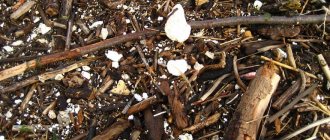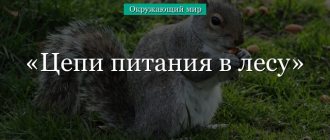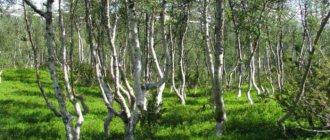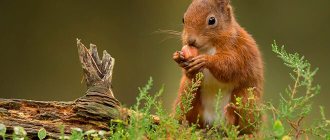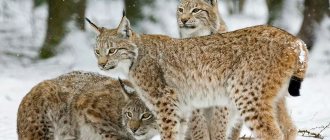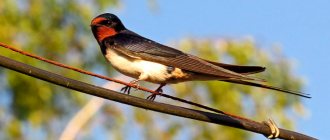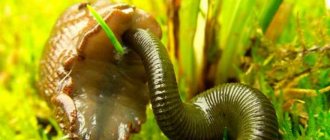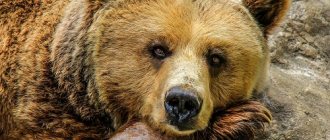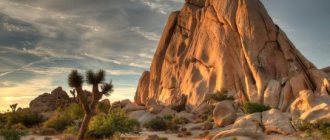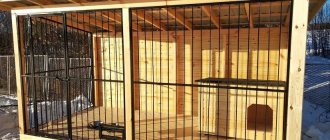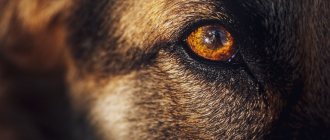Hedgehogs are small but charming mammals, endowed with a special “outfit” - their body is covered with many spines. Such uniforms, according to nature’s plan, should save the animal from predators and other threats of the forest, because the hedgehog, when danger arises, curls into a ball. In the form of a spiky ball, the mammal looks terrifying, and the hedgehog's enemy retreats.
However, this does not happen with all predators. Some forest inhabitants still hunt hedgehogs and eat them. There are not many such animals, but the prickly creatures still have something to fear.
What do hedgehogs drink?
Hedgehogs drink
water.
Monitor your pet to see if he can drink from a hanging water bowl. If not, then it’s better to pour water into a bowl; not all hedgehogs
cope with drinking bowls. 10.
Interesting materials:
What should you take with you when you go to the hospital? What should you take with you when moving to Moscow? What should you take with you when evacuating? What should a teenage girl take with her to camp? What do you need to complete to become a massage therapist? What do you need to know to become a pharmacist? What do you need to know to become a businessman? What do you need to know to become a notary? What do you need to know to navigate the terrain? What do you need to know to become an ecologist?
Owls
The most terrible enemies of hedgehogs are birds of prey from the Owl family. These include the eagle owl, as well as the Eurasian eagle owl. Their advantage in hunting is their activity at night; it is this factor that influences their success in searching for food. Hedgehogs, like owls, lead an active lifestyle at night, so a collision between these two forest inhabitants is almost inevitable.
The eagle owl is the largest representative of the Owls, its wingspan reaches up to two meters, and it weighs at least three. Such a powerful bird has a huge advantage over its thorny prey. In addition, eagle owls have a quick reaction; they grab unfortunate hedgehogs with lightning speed, and they don’t even have time to curl up into a protective ball. Even if the prey was not caught by surprise, the eagle owl simply grabs it with its powerful paws, which are not afraid of thorns.
Energy in the food chain
Energy is transferred between trophic levels when one organism feeds on and receives nutrients from another. However, this movement of energy is inefficient, and this inefficiency limits the length of food chains.
When energy enters a trophic level, some of it is stored as biomass, as part of the body of organisms. This energy is available for the next trophic level. Typically, only about 10% of the energy that is stored as biomass at one trophic level is stored as biomass at the next level.
This principle of partial energy transfer limits the length of food chains, which typically have 3-6 levels.
At each level, energy is lost in the form of heat, as well as in the form of waste and dead matter that decomposers use.
Why does so much energy leave the food web between one trophic level and the next? Here are some of the main reasons for inefficient energy transfer:
- At each trophic level, a significant portion of energy is dissipated as heat as organisms perform cellular respiration and move around in daily life.
- Some organic molecules that organisms feed on cannot be digested and are excreted as feces.
- Not all individual organisms in a trophic level will be eaten by organisms from the next level. Instead, they die without being eaten.
- Feces and uneaten dead organisms become food for decomposers, who metabolize them and convert them into their energy.
So, none of the energy actually disappears - it all ends up producing heat.
Musteluns
Mustelids or martens are carnivorous mammals, which include such enemies of hedgehogs as ferrets and weasels. These creatures are able to adapt to any living conditions, so they are widespread everywhere. These animals are distinguished by their small body size, which is not typical for predators.
Their advantage in hunting is their activity in the evening and at night, as well as at dusk. In addition, they have sensitive hearing and a fairly strong sense of smell, so hunting prey is not difficult for them.
The badger is a member of the mustelid family, which is the main enemy of hedgehogs. This is why they try to avoid areas where badger families live.
Food chain meaning
1. Food chain studies help understand feeding relationships and interactions between organisms in any ecosystem.
2. Thanks to them, it is possible to evaluate the mechanism of energy flow and the circulation of substances in the ecosystem, as well as understand the movement of toxic substances in the ecosystem.
3. Studying the food chain provides insight into biomagnification issues.
In any food chain, energy is lost every time one organism is consumed by another. Due to this, there should be many more plants than herbivores. There are more autotrophs than heterotrophs, and therefore most of them are herbivores rather than carnivores. Although there is intense competition between animals, they are all interconnected. When one species goes extinct, it can affect many other species and have unpredictable consequences.
Did you like the article? Share with your friends:
Source: NatWorld.info
Mongooses
Indian gray mongooses also love to eat hedgehog meat. Mongooses are famous for their ability to hunt dangerous predators, including cobras, so it is not strange that they fearlessly attack hedgehogs.
When hunting, they use creative tactics to gain access to their prey. To achieve their goal, they grab the victim and throw it onto a hard object. This is done in order to hit the hedgehog as hard as possible, which will force it to open up, opening the way for the mongoose to reach its soft belly.
Levels of the food (trophic) chain
A food chain is a linear sequence of organisms that transfer nutrients and energy from producers to top predators.
The trophic level of an organism is the position it occupies in the food chain.
First trophic level
The food chain begins with an autotrophic organism, or producer , producing its own food from a primary energy source, typically the sun or energy from hydrothermal vents at mid-ocean ridges. For example, photosynthetic plants, chemosynthetic bacteria and archaea.
Second trophic level
Next come the organisms that feed on autotrophs. These organisms are called herbivores or primary consumers and consume green plants. Examples include insects, hares, sheep, caterpillars and even cows.
Third trophic level
The next link in the food chain are animals that eat herbivores - these are called secondary consumers or carnivores (for example, a snake that eats hares or rodents).
Fourth trophic level
In turn, these animals are eaten by larger predators - tertiary consumers (for example, an owl eats snakes).
Fifth trophic level
Tertiary consumers are eaten by quaternary consumers (for example, a hawk eats owls).
Every food chain ends with an apex predator or superpredator—an animal with no natural enemies (e.g., crocodile, polar bear, shark, etc.). They are the “masters” of their ecosystems.
When any organism dies, it is eventually eaten by detritivores (such as hyenas, vultures, worms, crabs, etc.) and the rest is decomposed by decomposers (mainly bacteria and fungi), and energy exchange continues.
Arrows in a food chain show the flow of energy, from the sun or hydrothermal vents to top predators. As energy flows from body to body, it is lost at each link in the chain. The collection of many food chains is called a food web .
The position of some organisms in the food chain may vary because their diet is different. For example, when a bear eats berries, it acts as a herbivore. When it eats a plant-eating rodent, it becomes a primary predator. When a bear eats salmon, it acts as a superpredator (this is due to the fact that salmon is the primary predator because it feeds on herring, which eats zooplankton, which feeds on phytoplankton, which generate their own energy from sunlight). Think about how people's place in the food chain changes, even often within a single meal.
Types of food chains: examples in nature
They are divided into pasture and detritus. Pasture food chains are common in steppes and the world's oceans. The beginning of these chains are producers. For example, grass or algae. Next come first-order consumers, for example, herbivores or baby fish and small crustaceans that feed on algae. Next in the chain are small predators, such as foxes, minks, ferrets, perches, and owls. Superpredators, such as lions, bears, and crocodiles, complete the chain. Superpredators are not prey for other animals, but after their death they serve as food material for decomposers. Decomposers participate in the process of decomposition of the remains of these animals.
Detrital food chains originate from decaying organic matter. For example, from decaying leaves and remaining grass or from fallen berries. Such chains are common in deciduous and mixed forests. Fallen rotting leaves - woodlice - raven. Here is an example of such a food chain. Most animals and microorganisms can simultaneously be links in both types of food chains. An example of this is the woodpecker feeding on bugs that decompose dead wood. These are representatives of the detrital food chain. And the woodpecker itself can become prey for a small predator, for example, a lynx. Lynx can also hunt rodents - representatives of the pasture food chain.
Any food chain cannot be very long. This is due to the fact that only 10% of the energy of the previous level is transferred to each subsequent level. Most of them consist of 3 to 6 links.
Source: LivePosts.ru
Types of food chains
In nature, as a rule, there are two types of food chains: pasture and detritus.
Grassland food chain
This type of food chain begins with living green plants to feed the herbivores on which carnivores feed. Ecosystems with this type of circuit are directly dependent on solar energy.
Thus, the grazing type of food chain depends on the autotrophic capture of energy and its movement along the links of the chain. Most ecosystems in nature follow this type of food chain.
Examples of grazing food chains:
- Grass → Grasshopper → Bird → Hawk;
- Plants → Hare → Fox → Lion.
Detrital food chain
This type of food chain begins with decaying organic material—detritus—that detritivores consume. Then, predators feed on detritivores. Thus, such food chains are less dependent on direct solar energy than grazing ones. The main thing for them is the influx of organic substances produced in another system.
For example, this type of food chain is found in the decaying litter of temperate forests.
Hedgehog food
Hedgehogs' diet is based on animal food, consisting of beetles, earthworms, frogs, mice, shrews, and lizards. The prickly resident feasts on various insects and their larvae, snails, slugs, and can destroy a bird’s nest with eggs or hatched chicks.
In general, gluttony and omnivorousness are explained by activity and the need to store subcutaneous fat. Hedgehogs are toothy animals: 20 upper and 16 lower teeth help them cope with a wide variety of foods. Berries and plant fruits can be an addition to animal food.
Hedgehogs especially need food after emerging from hibernation. To restore strength, the animal can eat up to 1/3 of its weight overnight. In captivity, hedgehogs willingly eat meat, eggs, bread, ice cream and even oatmeal. A misconception is the idea of a hedgehog as a lover of sour cream and milk. Such food is contraindicated for him due to lactose intolerance.
Canidae family
An equally dangerous enemy of the prickly mammal is the predatory representatives of the canine family. These include forest dwellers such as foxes, wild and domestic dogs, and jackals. It is not difficult for these animals to attack a hedgehog and swallow it.
Their nose became an advantage for predators: both foxes and dogs are able to wedge it into the space in the hedgehog’s body where the spines meet. This trick forces the prey to unfold its armor, after which the animal hunter can feast on its prey.
Foxes, by nature, are more cunning, so they know another way to force a hedgehog to reveal its thorns. The fox begins to push the prickly creature towards a deep puddle, because in the water the victim must weaken its defenses, and at this time the cunning hunter will commit his crime.
Autotrophs (producers)
Autotrophs are living organisms that make their own food, that is, their own organic compounds, from simple molecules such as carbon dioxide. There are two main types of autotrophs:
- Photoautotrophs (photosynthetic organisms) such as plants process energy from sunlight to produce organic compounds—sugars—from carbon dioxide through the process of photosynthesis. Other examples of photoautotrophs are algae and cyanobacteria.
- Chemoautotrophs obtain organic substances due to chemical reactions that involve inorganic compounds (hydrogen, hydrogen sulfide, ammonia, etc.). This process is called chemosynthesis.
Autotrophs are the basis of every ecosystem on the planet. They make up the majority of food chains and webs, and the energy obtained through photosynthesis or chemosynthesis supports all other organisms in ecological systems. When it comes to their role in food chains, autotrophs can be called producers or producers.
Producers
Producers are living organisms that independently produce nutrients. For example, plants or algae. To produce organic substances, producers can use sunlight or simple inorganic compounds such as carbon dioxide or hydrogen sulfide. Such organisms are also called autotrophic. Autotrophs are the first link of any food chain and form its basis, and the energy received by these organisms supports each subsequent link.
What does a hedgehog look like?
An ordinary hedgehog looks quite small, because its size is small. This prickly animal has a body length of 20-30 cm and a very short tail of 3 cm, which is invisible under its fur coat. The body weight of the common hedgehog is 700-800 g. Females are slightly larger than males in size.
The hedgehog looks funny. It has small ears, the length of which is 3 cm. The European hedgehog has a large head with an elongated muzzle, on which there are small, beady black eyes. One of the features of what a hedgehog looks like is its sharp and always moist black nose.
But, despite such a cute and funny appearance, the common hedgehog can boast of having small but sharp teeth. He has 20 of them on his upper jaw, and 16 on his lower jaw. The European hedgehog also has sharp claws on its paws. Each of its paws contains 5 fingers. The hind limbs of the hedgehog are slightly longer than the front ones.
And of course, the most important distinguishing feature of a hedgehog is its spines. Thanks to them, the hedgehog doesn't look so harmless. Surely everyone has wondered, how many spines does a hedgehog have? So, usually an adult hedgehog has 5-6 thousand spines. Young hedgehogs have about 3 thousand spines.
The common hedgehog has short spines, no more than 3 cm long. The hedgehog's spines have a smooth surface, are empty inside and filled with air. They are brown in color with dark and light transverse stripes. Due to this coloring of its prickly coat, the hedgehog looks quite inconspicuous.
The hedgehog's spines on the head and sides are shorter and 2 cm long. Between the spines there are very sparse and thin hairs. The head and belly of the hedgehog are covered with coarse and dark hair.
The paws, muzzle and belly of European hedgehogs range in color from whitish-yellow to deep dark brown. The chest and throat of the hedgehog have a uniform color, without different white spots.
Destructors (reducers)
Another consumer group should be mentioned, although it does not always appear in food chain diagrams. This group consists of decomposers, organisms that process dead organic matter and waste, turning them into inorganic compounds.
Decomposers are sometimes considered a separate trophic level. As a group, they feed on dead organisms coming from various trophic levels. (For example, they are able to process decaying plant matter, the body of a squirrel malnourished by predators, or the remains of a deceased eagle.) In a sense, the trophic level of decomposers runs parallel to the standard hierarchy of primary, secondary, and tertiary consumers. Fungi and bacteria are key decomposers in many ecosystems.
Decomposers, as part of the food chain, play an important role in maintaining a healthy ecosystem because they return nutrients and moisture to the soil, which are then used by producers.
